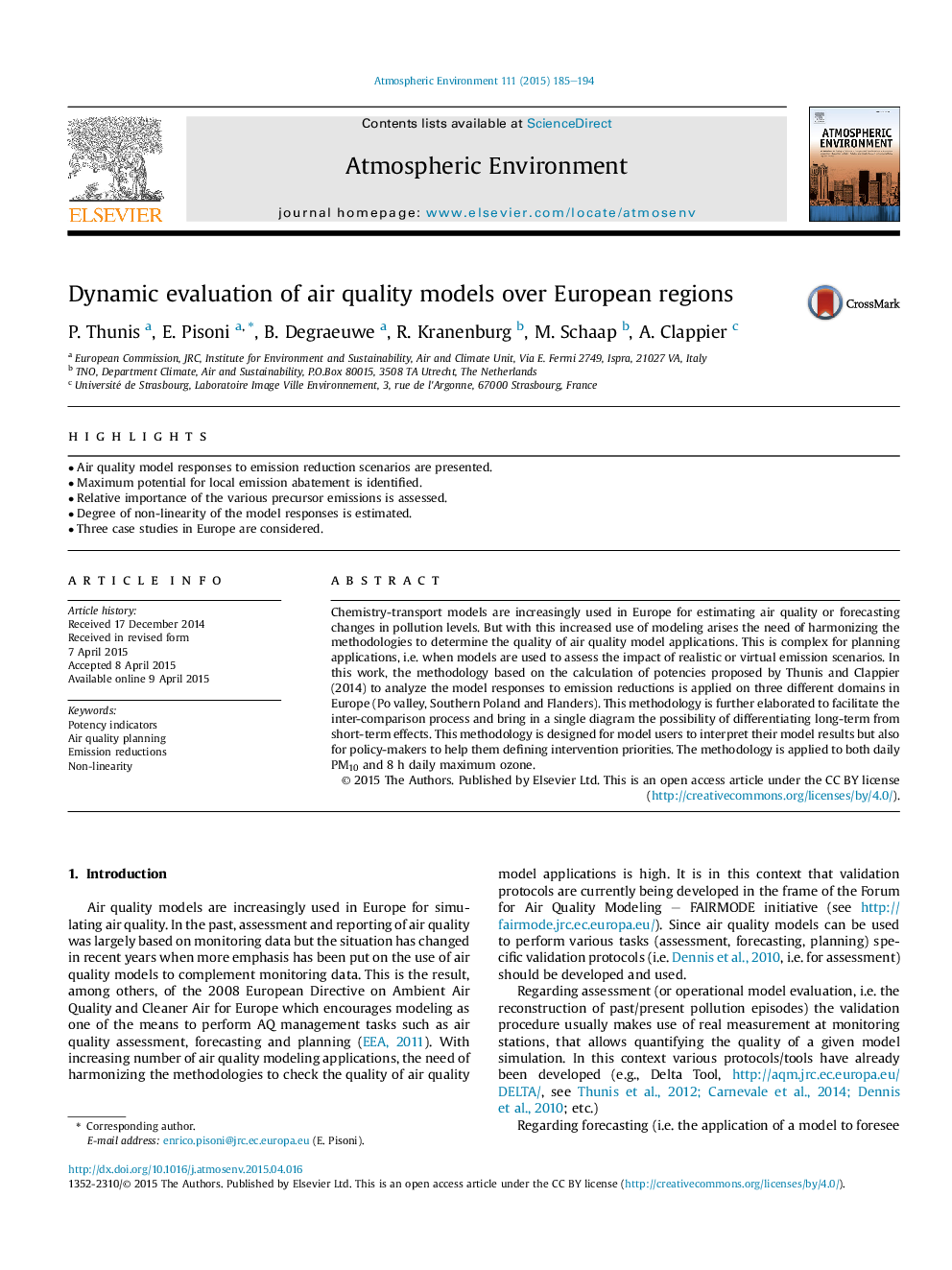| Article ID | Journal | Published Year | Pages | File Type |
|---|---|---|---|---|
| 6337953 | Atmospheric Environment | 2015 | 10 Pages |
Abstract
Chemistry-transport models are increasingly used in Europe for estimating air quality or forecasting changes in pollution levels. But with this increased use of modeling arises the need of harmonizing the methodologies to determine the quality of air quality model applications. This is complex for planning applications, i.e. when models are used to assess the impact of realistic or virtual emission scenarios. In this work, the methodology based on the calculation of potencies proposed by Thunis and Clappier (2014) to analyze the model responses to emission reductions is applied on three different domains in Europe (Po valley, Southern Poland and Flanders). This methodology is further elaborated to facilitate the inter-comparison process and bring in a single diagram the possibility of differentiating long-term from short-term effects. This methodology is designed for model users to interpret their model results but also for policy-makers to help them defining intervention priorities. The methodology is applied to both daily PM10 and 8Â h daily maximum ozone.
Related Topics
Physical Sciences and Engineering
Earth and Planetary Sciences
Atmospheric Science
Authors
P. Thunis, E. Pisoni, B. Degraeuwe, R. Kranenburg, M. Schaap, A. Clappier,
